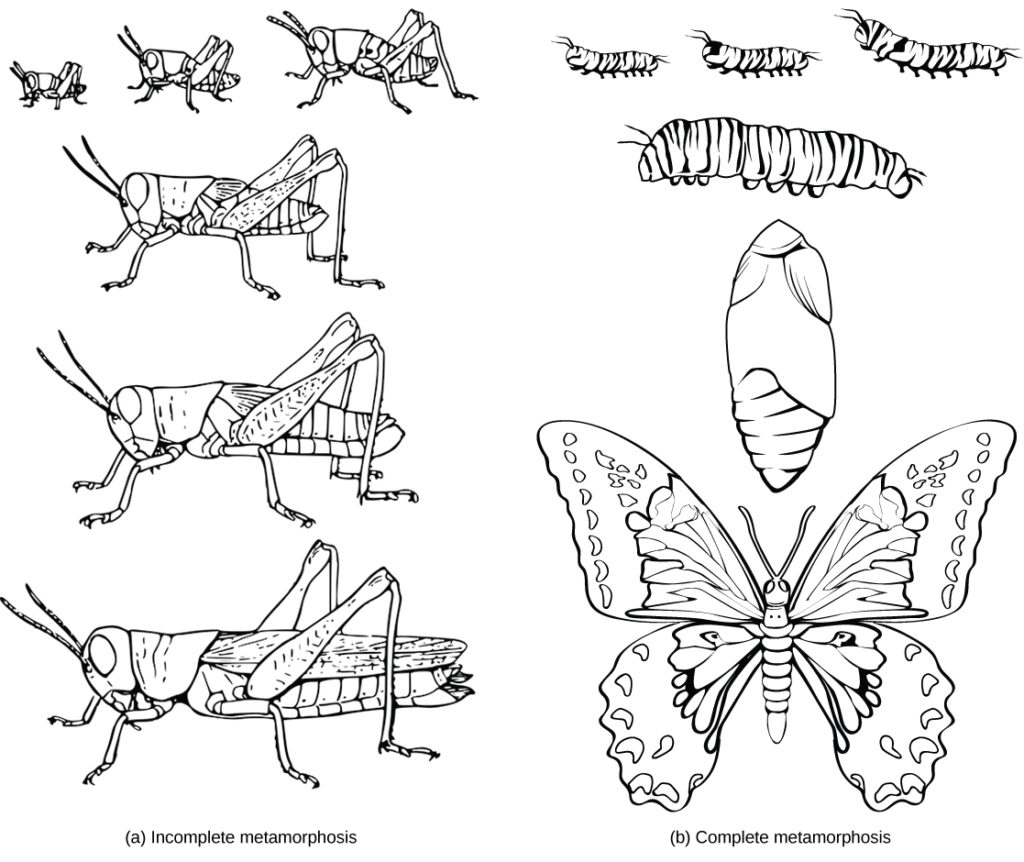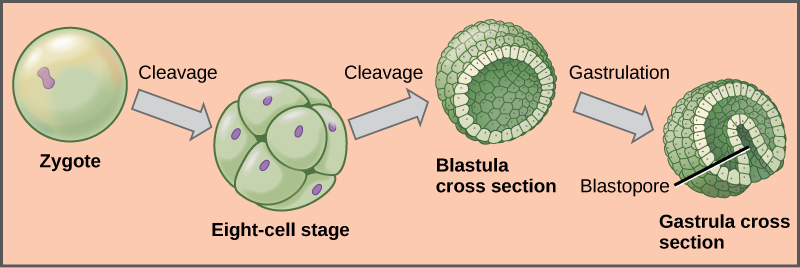13.11: Processes of Animal Reproduction and Development
- Page ID
- 44693
Learning Outcomes
- Explain the processes of animal reproduction and embryonic development
During sexual reproduction, the haploid gametes of the male and female individuals of a species combine in a process called fertilization. Typically, the small, motile male sperm fertilizes the much larger, sessile female egg. This process produces a diploid fertilized egg called a zygote.
Some animal species—including sea stars and sea anemones, as well as some insects, reptiles, and fish—are capable of asexual reproduction. The most common forms of asexual reproduction for stationary aquatic animals include budding and fragmentation, where part of a parent individual can separate and grow into a new individual. In contrast, a form of asexual reproduction found in certain insects and vertebrates is called parthenogenesis (or “virgin beginning”), where unfertilized eggs can develop into new male offspring. This type of parthenogenesis is called haplodiploidy. These types of asexual reproduction produce genetically identical offspring, which is disadvantageous from the perspective of evolutionary adaptability because of the potential buildup of deleterious mutations. However, for animals that are limited in their capacity to attract mates, asexual reproduction can ensure genetic propagation.

After fertilization, a series of developmental stages occur during which primary germ layers are established and reorganize to form an embryo. During this process, animal tissues begin to specialize and organize into organs and organ systems, determining their future morphology and physiology. Some animals, such as grasshoppers, undergo incomplete metamorphosis, in which the young resemble the adult. Other animals, such as some insects, undergo complete metamorphosis where individuals enter one or more larval stages that may in differ in structure and function from the adult (Figure 1). For the latter, the young and the adult may have different diets, limiting competition for food between them. Regardless of whether a species undergoes complete or incomplete metamorphosis, the series of developmental stages of the embryo remains largely the same for most members of the animal kingdom.
The process of animal development begins with the cleavage, or series of mitotic cell divisions, of the zygote (Figure 2). Three cell divisions transform the single-celled zygote into an eight-celled structure. After further cell division and rearrangement of existing cells, a 6–32-celled hollow structure called a blastula is formed. Next, the blastula undergoes further cell division and cellular rearrangement during a process called gastrulation. This leads to the formation of the next developmental stage, the gastrula, in which the future digestive cavity is formed. Different cell layers (called germ layers) are formed during gastrulation. These germ layers are programmed to develop into certain tissue types, organs, and organ systems during a process called organogenesis.

Watch the following video to see how human embryonic development (after the blastula and gastrula stages of development) reflects evolution:
Contributors and Attributions
- Biology. Provided by: OpenStax CNX. Located at: http://cnx.org/contents/185cbf87-c72e-48f5-b51e-f14f21b5eabd@10.8. License: CC BY: Attribution. License Terms: Download for free at http://cnx.org/contents/185cbf87-c72...f21b5eabd@10.8
- What Can Embryos Tell Us About Evolution?. Authored by: The Science Channel . Located at: https://youtu.be/uAZmLYWEPGk. License: All Rights Reserved. License Terms: Standard YouTube License

